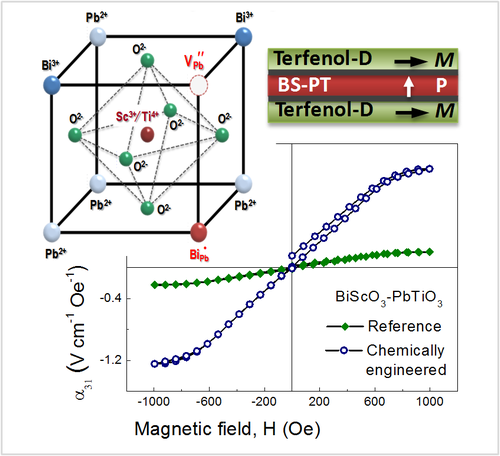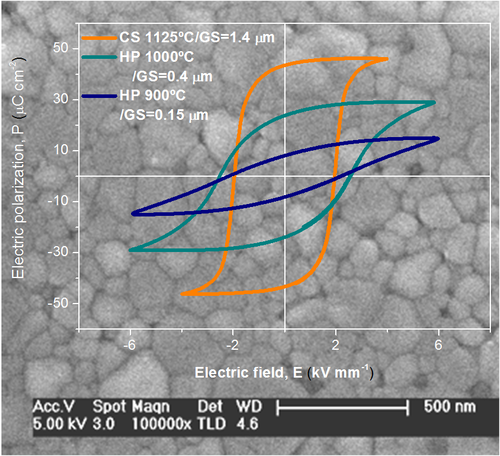contact person: Miguel Algueró
Development of novel piezoelectric ceramic materials under design
Piezoelectric ceramics are a mature and ubiquitous material technology as active elements of a range of electromechanical transduction devices, including sensors, actuators, smart systems, ultrasound transducers, underwater acoustics, and many others. They are also being considered for novel applications like energy harvesting and magnetoelectric transduction. Current state of the art high sensitivity materials are perovskite oxides of the Pb(Zr,Ti)O3 (PZT) system around its morphotropic phase boundary (MPB) between the ferroelectric rhombohedral and tetragonal polymorphs. However, these materials have a number of drawbacks that hinders their use in several applications, and research is extensive in the development of alternative materials that outperform them. A major limitation of PZTs is the operation temperature range, typically limited below 200ºC. This prevents the introduction of piezoelectric devices in high temperature environments. At ICMM we are currently working in the development of novel materials capable of operating beyond this temperature, suitable for severe conditions. Chemical design of novel perovskite solid solutions with ferroelectric MPBs and high Curie temperature, and of point defects for targeted properties are being applied, supported by the use of mechanochemistry approaches in the synthesis. Specifically, we have recently developed two point defect engineered BiScO3-PbTiO3 ceramic materials suitable for high power operation and sensing, respectively, with operation up to 400ºC. Recently enforced environmental regulations worldwide like EU-Directive 2002/95/EC (RoHS) require the restriction of the use of lead, among a list of hazardous substances, in electrical and electronic equipment. This has fostered the search of lead-free alternatives to PZT-based state-of-the-art commercial high sensitivity piezoceramics. EOSMAD is applying the same design concepts and synthesis approaches to this aim, and novel Bi-based perovskite oxide solid solutions are being investigated. Additionally, and taking advantage of the available facilities and large expertise in electrical, mechanical and electromechanical characterization, the group regularly collaborates with teams developing lead-free materials worldwide to provide these characterizations.

Structuring of high sensitivity piezoelectric ceramics at different scales
A second limitation of high sensitivity piezoceramics is their poor mechanical performance. This not only limits strain and stress operation levels, but often also makes machining difficult, even preventing the fabrication of ceramic elements with required non conventional shapes and/or features. A well known procedure to enhance mechanical performance is ceramic microstructure refinement down to the submicron range, and further down to the nanoscale. However, and in the case of piezoelectric ceramics, this is usually accompanied with a distinctive degradation of functionality. At ICMM we are currently working in the development of submicron- and nanostructured ceramic materials of high sensitivity piezoelectrics that provide an enhanced mechanical performance, while maintaining full functionality. Novel perovskite solid solutions with improved down-scaling behaviour of properties are being investigated, along with the use of advanced pressure- or/and electrical current-assisted processing techniques like spark plasma sintering. Specifically, we have recently developed two chemically modified BiScO3-PbTiO3 ceramic materials for high power and enhanced voltage response applications, microstructurally engineered to operate in severe conditions of stress. Microstructure control at a different level is also being addressed. Ceramic texturing of high sensitivity piezoelectrics is a powerful means of further enhancing their piezoelectric response. Namely, a novel templated grain growth approach only involving conventional ceramic technologies has been demonstrated for the processing of <001> oriented Pb(Mg1/3Nb2/3)-PbTiO3 ceramics with very large piezoelectric response.

